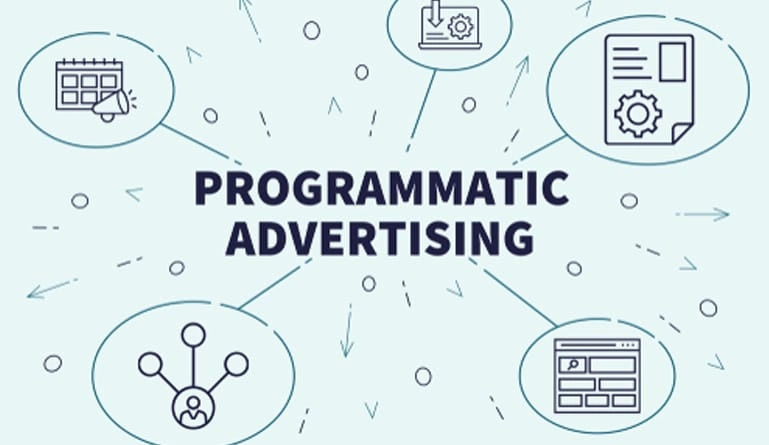Programmatic advertising is changing the face of digital marketing. This automated process for buying and selling online ad space provides major benefits for both publishers and advertisers. In this post, we’ll explain exactly what programmatic advertising is, how the process works, and why it’s become so important.
What is Programmatic Advertising?
Programmatic Advertising refers to the automated buying and selling of online ad impressions through an auction-based system. It uses software and algorithms to purchase digital ad inventory rather than human negotiations.
With programmatic advertising, publishers make their ad inventory available for advertisers to bid on in real time. As soon as a user loads a web page, an auction is held for the ad space on that page. Advertisers bid for the ad impression based on the user’s profile and browsing history, and the highest bidder wins the auction to display their ad to that user.
This all happens in the split second it takes for the page to load, allowing extremely targeted and personalized ads to be delivered.
The Benefits of Programmatic Advertising
Programmatic advertising provides major advantages for both publishers and advertisers:
For publishers
- Fill ad inventory and reduce wasted ad space
- Get higher ad rates by increasing competition
- Reduce time and resources spent negotiating ad deals
- Provide a better user experience with relevant ads
For advertisers
- Precisely target desired audiences
- Gain access to a larger pool of ad inventory
- Only pay for impressions that match the target criteria
- Monitor campaign performance and optimize in real-time
Programmatic allows publishers to easily make all their inventory available to be sold and gives advertisers far more control over targeting and budget allocation. This makes ad spending more efficient and effective for brands while helping publishers maximize yield from their ad space.
How Programmatic Advertising Works?
Behind the scenes, programmatic advertising relies on a complex technology ecosystem. Here are the key components:
Supply-Side Platforms (SSPs) – SSPs are used by publishers to connect their ad inventory to exchanges and conduct auctions.
Demand-Side Platforms (DSPs) – DSPs are used by advertisers to bid on ad impressions from exchanges. They use data to determine bid prices.
Ad Exchanges – Exchanges provide a marketplace where SSPs offer impression inventory and DSPs bid on it.
Data Management Platforms (DMPs) – DMPs collect and manage data like audience demographics and behaviors to enhance targeting.
Advertiser – The brand or agency looking to buy ad inventory to promote their products/services.
Publisher – The owner of a website who wants to sell ad space to advertisers.
Here is how the programmatic advertising process typically works:
- A user visits a website, triggering a bid request for the ad space on the page.
- The publisher’s SSP connects to ad exchanges to auction the impression.
- Advertisers bid for the impression via their DSP, relying on audience data from DMPs.
- In milliseconds, the exchange awards the impression to the highest bidder.
- The advertiser’s ad is instantly delivered to the user’s browser.
- The SSP records the impression and bid price for the publisher.
This sequence happens in the blink of an eye, allowing extremely targeted ads to be delivered to users based on their profiles.
Programmatic Advertising Models
There are two main mechanisms for buying and selling programmatic ads:
Real-Time Bidding (RTB) – Inventory is bought and sold on an impression-by-impression basis in real time. Advertisers evaluate each impression and place bids accordingly.
Programmatic Direct – Advertisers purchase reserved inventory directly from publishers through automated guaranteed deals. No bidding takes place.
RTB provides more flexibility for advertisers in terms of volume and targeting capabilities. Programmatic Direct ensures advertisers get access to premium inventory while publishers are guaranteed revenue.
Most programmatic ad campaigns utilize a combination of RTB and direct buys.
The Importance of Programmatic Advertising
Programmatic advertising has revolutionized the digital advertising landscape. Here are some key stats about its impact:
- Accounts for over 80% of digital display ad spending in the U.S.
- Provides 45% greater capability to target desired audiences
- Delivers ads that are twice as likely to be viewed by consumers
- Reduces CPMs by 60% compared to manual media buying
With its ability to combine powerful data and advanced automation, programmatic makes ad buying more efficient and effective than ever before. And its share of ad spend will only continue to grow as data and tech capabilities accelerate.
Any modern digital marketing strategy needs to incorporate programmatic to maximize reach and optimize budget. Both publishers and advertisers can leverage its precision targeting to drive better campaign performance and extract the most value from ad inventory.
The Future of Programmatic Advertising
Programmatic advertising is still evolving. Here are some key developments to keep an eye on:
- Advanced AI and machine learning to improve targeting and bidding decisions
- Increased focus on privacy as cookies decline and data regulations tighten
- New solutions to reduce ad fraud and increase transparency
- Expansion into OTT, CTV, digital audio, and other channels beyond display
- Next-generation creative optimization for more dynamic and relevant ads
As programmatic technology advances, it will open up new opportunities for both publishers and advertisers well into the future. Those who embrace it now will have a leg up on the competition.
Read More- The Complete Guide to High-Ticket Digital Marketing: Tips for Maximizing Your ROI

